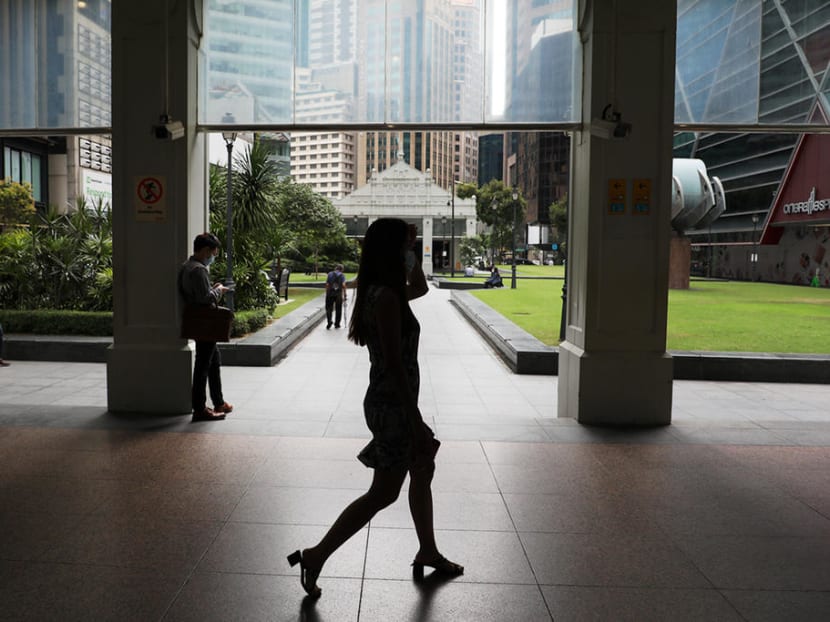Employment among S’poreans, PRs rebounds to pre-pandemic levels: MOM
SINGAPORE — Employment among citizens and permanent residents (PRs) rebounded to pre-pandemic levels by the end of last year, the Ministry of Manpower (MOM) said on Thursday (Jan 28).

Unemployment rates fell for the second consecutive month in December 2020 since the start of the Covid-19 pandemic.
- Resident employment rebounded to pre-pandemic levels by the end of 2020
- Unemployment also fell for the second consecutive month in December 2020
- Total employment contraction, however, was at its most severe in two decades
- Warning that “momentum could stall”, Manpower Minister Josephine Teo said the ministry would work to stabilise the situation and boost hiring demand
SINGAPORE — Employment among citizens and permanent residents (PRs) rebounded to pre-pandemic levels by the end of last year, the Ministry of Manpower (MOM) said on Thursday (Jan 28).
Releasing its labour market estimates for the fourth quarter of 2020, MOM said that the number of employed residents had risen by 9,300 for the year.
Resident employment went up for the fourth quarter as it did the previous quarter, while unemployment rates fell for the second consecutive month in December last year since the start of the Covid-19 crisis.
Retrenchments declined for the first time after five quarters of increases.
Even so, Manpower Minister Josephine Teo warned that significant risks remain for the labour market and that the “momentum can stall”.
She said that MOM would work to stabilise the situation and boost hiring demand.
It will also focus on bringing down unemployment among citizens and PRs, which “is not where we would like it to be”, she said.
MOM’s preliminary data showed that the unemployment rate for residents was at 4.4 per cent last December, down from 4.6 per cent in the previous month but higher than the 3.2 per cent in December 2019, before Covid-19 hit.
The ministry’s latest labour market figures also showed that the total employment contraction in 2020 was the most severe in two decades.
This was because employment among non-residents shrunk by 16 per cent (or 181,500), resulting in an overall employment decline of 172,200.
Mrs Teo said that the contraction was significant: It was equivalent to about 5 per cent of the workforce and was “fully accounted for” by the reduction of work-pass holders.
The sustained employment among residents will provide a “good footing” for the year ahead, she added.
Here’s a closer look at the numbers.
RESIDENT, NON-RESIDENT EMPLOYMENT
Resident employment grew by 28,900 in the last quarter of the year, after expanding by 43,200 in the third quarter. This was due to business activity gathering pace after the circuit breaker in April and May that restricted activities to combat Covid-19.
At the same time, the number of non-residents in employment continued to decline by 42,400 from October to December last year.
This led to total employment shrinking by a further 13,500 in the fourth quarter.
MOM said that the manufacturing and construction sectors saw steeper contractions in employment, which are largely the result of fewer non-resident work-permit holders in the workforce.
The services sector — primarily public administration and education — recorded employment growth, with mainly residents being hired.
Seasonal hiring for the year-end festive period also boosted employment in food-and-beverage services and retail.
Overall, the decline in non-resident employment was broad-based across all sectors, while resident employment dropped mostly in sectors hit hard by Covid-19, such as accommodation and the wholesale trade, MOM said.
Most of the increases in resident employment were in growth sectors such as infocommunications and technology, financial services and professional services.
UNEMPLOYMENT RATE CONTINUED TO DIP
For the second month running, the unemployment rate for citizens and PRs continued to decline, from a peak of 4.8 per cent in October last year to 4.4 per cent by December.
For citizens alone, the unemployment rate dipped from 4.9 per cent in October last year to 4.5 per cent in December.
The overall unemployment rate, which covers citizens, PRs and foreigners living in households here, dropped from 3.6 per cent to 3.2 per cent between October and December last year.
These were, however, higher than the unemployment rates seen in December 2019 — 3.2 per cent for citizens and PRs, 3.3 per cent for citizens and 2.3 per cent overall.
MOM said this suggested that resident workforce participation had been sustained despite the pandemic, as more people joined or stayed in the workforce than those who exited.
The ministry added that because unemployment rates last year were consistently higher than in 2019, the annual average jobless rates for the year also rose but stayed below those observed during the severe acute respiratory syndrome (Sars) crisis in 2003 and the Global Financial Crisis in 2009.
RETRENCHMENTS LOWER THAN IN PAST RECESSIONS
The number of retrenchments in the fourth quarter of last year is expected to be lower than that in the third quarter, marking the first drop after five quarters of increases.
A total of 6,100 people were retrenched in the fourth quarter, based on MOM’s estimates, compared with 9,120 in the third quarter.
Retrenchments last year affected mainly arts, entertainment and recreation, the wholesale trade as well as air transport services.
It remains to be seen if the reduction in retrenchments would be sustained this year.
Retrenchments are expected to go up in the air transport services sector, for instance, because of prevailing travel restrictions, MOM said.
Business transformation in other sectors may also result in further displacements, it added.
The total number of people retrenched in 2020 is expected to reach 26,570. In other words, 13 out of every 1,000 employees in Singapore were displaced.
This incidence of retrenchment is significantly lower than in past recessionary years.
During the 1998 Asian Financial Crisis, it was 32.7 for every 1,000 employees. It was 26.3 per 1,000 employees in the 2001 dot-com bust, 16.7 per 1,000 employees during the Sars outbreak, and 14.2 for every 1,000 employees during the Global Financial Crisis.
On whether more retrenchments are expected this year, Mrs Teo said that the recovery would be uneven and emphasised again that the “whole momentum potentially could stall".
"If that were to happen, certainly we would expect that retrenchments will remain elevated.”
Mrs Teo gave the assurance that MOM would pay close attention to the situation and work with other agencies to identify the measures needed to support workers in affected sectors.
Some of these measures will be unveiled as part of the upcoming Budget on Feb 16, she said.








